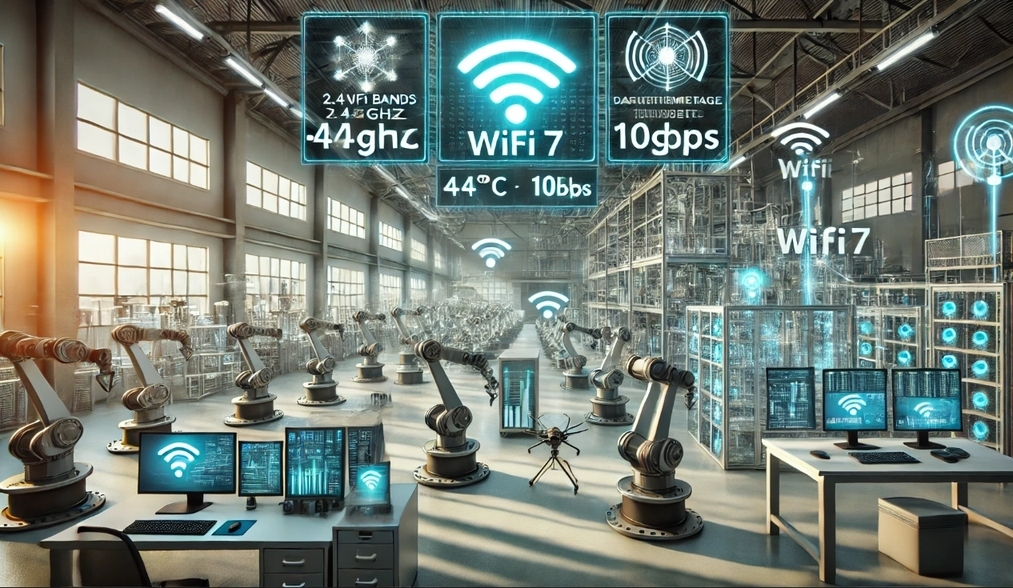通信人家园
标题: Comprehensive Analysis of IPQ9574, IPQ5312, and IPQ5322-Exploring Industrial WiF [查看完整版帖子] [打印本页]
时间: 2024-12-30 15:23
作者: wifi6
标题: Comprehensive Analysis of IPQ9574, IPQ5312, and IPQ5322-Exploring Industrial WiF
As the demand for wireless communication in industrial sectors continues to grow, WiFi 7 technology has become an essential option due to its high bandwidth, low latency, and enhanced multi-device connectivity. However, selecting the right motherboard chip to meet industrial requirements is a crucial aspect of project design. Qualcomm's IPQ9574, IPQ5312, and IPQ5322 are three of the most popular industrial WiFi 7 motherboard chips on the market. This article provides a comprehensive analysis from the perspectives of performance, application scenarios, cost, power consumption, environmental adaptability, and technical support to assist in selecting the most suitable solution.
I. Performance Comparison1. IPQ9574Positioning: High-end flagship chip
Core Configuration:
Features a 4-core ARM Cortex-A73 architecture with a clock speed of up to 2.2GHz, delivering exceptional computational capabilities.
Integrated with a 16x16 WiFi module, supporting 4x4 MU-MIMO and advanced modulation (4096-QAM) to fully leverage WiFi 7 capabilities.
WiFi Support:
Supports multiple bands (2.4GHz, 5GHz, 6GHz, 6E), ideal for large-scale data transmission.
Throughput: Theoretical maximum throughput exceeds 10Gbps.
Advantages:
Outstanding performance, ideal for high concurrency and high-speed transmission in industrial environments.
Built-in high-efficiency encryption and network optimization modules provide enhanced network security.
Excels in scenarios like edge computing, industrial robotics, and video surveillance.
2. IPQ5312Positioning: Mid-range industrial chip
Core Configuration:
Equipped with a dual-core ARM Cortex-A53 architecture with a 1.4GHz clock speed, suitable for moderate computational tasks.
Integrated WiFi module supporting 2x2 MU-MIMO.
WiFi Support:
Covers 2.4GHz, 5GHz, and 6GHz bands, offering moderate bandwidth capacity.
Throughput: Theoretical peak throughput is approximately 2Gbps.
Advantages:
Extremely low power consumption, suitable for battery-powered devices or scenarios sensitive to energy consumption.
Cost-effective, making it an optimal choice for small- to medium-scale industrial projects.
3. IPQ5322Positioning: High cost-performance mid-to-high-end chip
Core Configuration:
Features a quad-core ARM Cortex-A53 architecture with a 1.5GHz clock speed, delivering balanced computational power.
Supports 2x2 and 4x4 MU-MIMO configurations, flexibly adapting to diverse needs.
WiFi Support:
Includes 2.4GHz, 5GHz, and 6GHz bands with high spectrum efficiency.
Throughput: Theoretical maximum is up to 5Gbps.
Advantages:
Strikes a good balance between performance and cost.
Suitable for most industrial scenarios, ranging from medium-sized factories to intelligent transportation systems.
II. Application Scenarios Comparison1. IPQ9574 Application ScenariosIdeal for high-density industrial environments, such as large-scale production base wireless connections.
Meets edge computing needs, supporting real-time data analysis and complex multi-device synchronization.
Typical scenarios include:
High-concurrency device access in smart factories.
Industrial video surveillance and high-definition image transmission.
AR/VR interactive systems.
2. IPQ5312 Application ScenariosSuitable for small-to-medium industrial networks, such as sensor networks and remote monitoring device connections.
Designed for lightweight data processing and transmission tasks.
Typical scenarios include:
Communication for small production lines.
Low-power wireless connectivity in indoor industrial environments.
3. IPQ5322 Application ScenariosBroadly applicable to medium-to-large industrial projects, balancing performance and cost control.
Meets more complex industrial needs, such as extensive wireless coverage and medium-to-high bandwidth requirements.
Common scenarios include:
Efficient wireless networks for medium-sized factories.
Data transmission and monitoring for intelligent transportation systems.
Equipment collaboration in warehouse and logistics centers.
III. Cost Analysis
While IPQ9574 offers top-notch performance, its cost is relatively high. IPQ5312 is affordable but limited in performance, while IPQ5322 balances performance and cost effectively, making it the mainstream choice for most industrial projects.
IV. Power Consumption and Environmental AdaptabilityIPQ9574:
Higher power consumption but excellent temperature resilience, enduring harsh industrial environments (-40°C to 85°C).
Equipped with advanced energy-saving mechanisms, suitable for locations with stable power supply.
IPQ5312:
Lowest power consumption, ideal for battery-powered devices or energy-sensitive scenarios.
Narrower operating temperature range (-20°C to 65°C), suitable for indoor environments.
IPQ5322:
Moderate power consumption, balancing performance and energy efficiency.
Operating temperature range supports -40°C to 85°C, offering broad adaptability.
V. Technical Support and Ecosystem CompatibilityIPQ9574:
Provides comprehensive WiFi 7 feature support and compatibility with Qualcomm’s top-tier software and development tools.
Demands higher technical expertise from development teams, suitable for organizations with robust R&D resources.
IPQ5312:
Rich in basic features and easy to develop.
Short development cycles, ideal for projects requiring rapid deployment.
IPQ5322:
Highly flexible, compatible with various development tools and ecosystems.
Supports a wide range of applications, ideal for long-term industrial projects.
VI. Selection RecommendationsChoose IPQ9574:
For projects requiring extremely high performance, support for multi-device concurrency, and ample budget, this is the best choice.
Suitable for large projects or high-end applications with stringent performance demands.
Choose IPQ5312:
For small-scale projects with limited budget and energy sensitivity, IPQ5312 is the most economical option.
Ideal for small-to-medium industrial scenarios like wireless sensor networks and basic data transmission.
Choose IPQ5322:
For balanced performance and cost, with requirements for higher adaptability and bandwidth, IPQ5322 is the ideal choice.
Suitable for medium-scale industrial projects or deployments sensitive to cost constraints.
ConclusionIn industrial WiFi 7 projects, selecting the right motherboard chip depends on specific project requirements, budget, and environmental conditions. IPQ9574 suits high-performance scenarios; IPQ5312 addresses basic needs at a low cost; and IPQ5322 finds the optimal balance between performance and cost. By thoroughly assessing project needs, choosing the appropriate motherboard chip can provide stable and efficient wireless network support for industrial applications.
We hope this analysis offers valuable guidance for your project planning and chip selection!
 附件: IPQ9574.png (2024-12-30 15:23, 787.67 KB) / 下载次数 0
附件: IPQ9574.png (2024-12-30 15:23, 787.67 KB) / 下载次数 0
https://test.txrjy.com/forum.php?mod=attachment&aid=NjY3NDE3fDEzNDJjN2QxfDE3NjYxNzcxMTF8MHww
时间: 2024-12-30 16:16
作者: 愤怒的拳头
学习了
时间: 2024-12-30 17:36
作者: hjh_317
不明觉厉。
| 通信人家园 (https://test.txrjy.com/) |
Powered by C114 |



 附件: IPQ9574.png (2024-12-30 15:23, 787.67 KB) / 下载次数 0
附件: IPQ9574.png (2024-12-30 15:23, 787.67 KB) / 下载次数 0